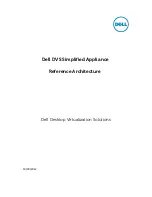
Chapter 8: Quality of Service (QoS)
96
Section I: Using the Menus Interface
QoS Overview
When a port on an Ethernet switch becomes oversubscribed—its egress
queues contain more packets than the port can handle in a timely
manner—the port may be forced to delay the transmission of some
packets, resulting in the delay of packets from reaching their destinations.
A port may be forced to delay transmission of packets while it handles
other traffic, and, in some situations, some packets destined to be
forwarded to an oversubscribed port from other switch ports may be
discarded.
Minor delays are often of no consequence to a network or its performance.
But there are applications, referred to as delay or time sensitive
applications, that can be impacted by packet delays. Voice transmission
and video conferencing are two examples. If packets carrying data for
either of these are delayed from reaching their destination, the audio or
video quality may suffer.
This is where QoS can be of value. It allows you to manage the flow of
traffic through a switch by having the switch ports give higher priority to
some packets, such as delay sensitive traffic, over other packets. This is
referred to as prioritizing traffic.
QoS actually consists of several different elements. The element
supported by the AT-GS950/16 and AT-GS950/24 switches is called
Class of Service (CoS). CoS applies primarily to tagged packets. As
explained in “Tagged VLAN Overview” on page 80, a tagged packet
contains information within it that specifies the VLAN to which the packet
belongs.
A tagged packet can also contain a priority level. This priority level is used
by network switches and other networking devices to know how important
(delay sensitive) that packet is in comparison to other packets. Packets of
a high priority are typically handled before packets of a low priority.
CoS, as defined in the IEEE 802.1p standard, has eight levels of priority.
The priorities are 0 to 7, with 0 the lowest priority and 7 the highest.
When a tagged packet is received on a port on the switch, it is examined
by the AT-S79 software for its priority. The switch software uses the
priority to determine which egress priority queue the packet should be
stored in on the egress port.
Each port on the AT-GS950/16 and AT-GS950/24 switches has four
priority queues, 0 (low) to 3 (high). When a tagged packet enters a switch
port, the switch responds by placing the packet into one of the queues
according to the assignments shown in Table 2. A packet in a high priority
egress queue is typically transmitted out a port sooner than a packet in a
low priority queue.
Summary of Contents for AT-S79
Page 6: ...Contents 6 ...
Page 10: ...Tables 10 ...
Page 22: ...22 Section I Using the Menus Interface ...
Page 28: ...Chapter 2 Getting Started with the Menus Interface 28 Section I Using the Menus Interface ...
Page 64: ...Chapter 5 Port Trunking 64 Section I Using the Menus Interface ...
Page 70: ...Chapter 6 Port Mirroring 70 Section I Using the Menus Interface ...
Page 94: ...Chapter 7 Virtual LANs 94 Section I Using the Menus Interface ...
Page 106: ...Chapter 8 Quality of Service QoS 106 Section I Using the Menus Interface ...
Page 118: ...Chapter 9 802 1x Port based Network Access Control 118 Section I Using the Menus Interface ...
Page 124: ...Chapter 10 RADIUS Authentication Protocol 124 Section I Using the Menus Interface ...
Page 134: ...134 Section II Using the Web Browser Interface ...
Page 166: ...Chapter 15 Port Configuration 166 Section II Using the Web Browser Interface ...
Page 172: ...Chapter 16 Port Trunking 172 Section II Using the Web Browser Interface ...
Page 176: ...Chapter 17 Port Mirroring 176 Section II Using the Web Browser Interface ...
Page 186: ...Chapter 18 Virtual LANs 186 Section II Using the Web Browser Interface ...
Page 192: ...Chapter 19 Quality of Service QoS 192 Section II Using the Web Browser Interface ...
Page 204: ...Chapter 23 Management Software Updates 204 Section II Using the Web Browser Interface ...
Page 208: ...Appendix A AT S79 Software Default Settings 208 ...















































